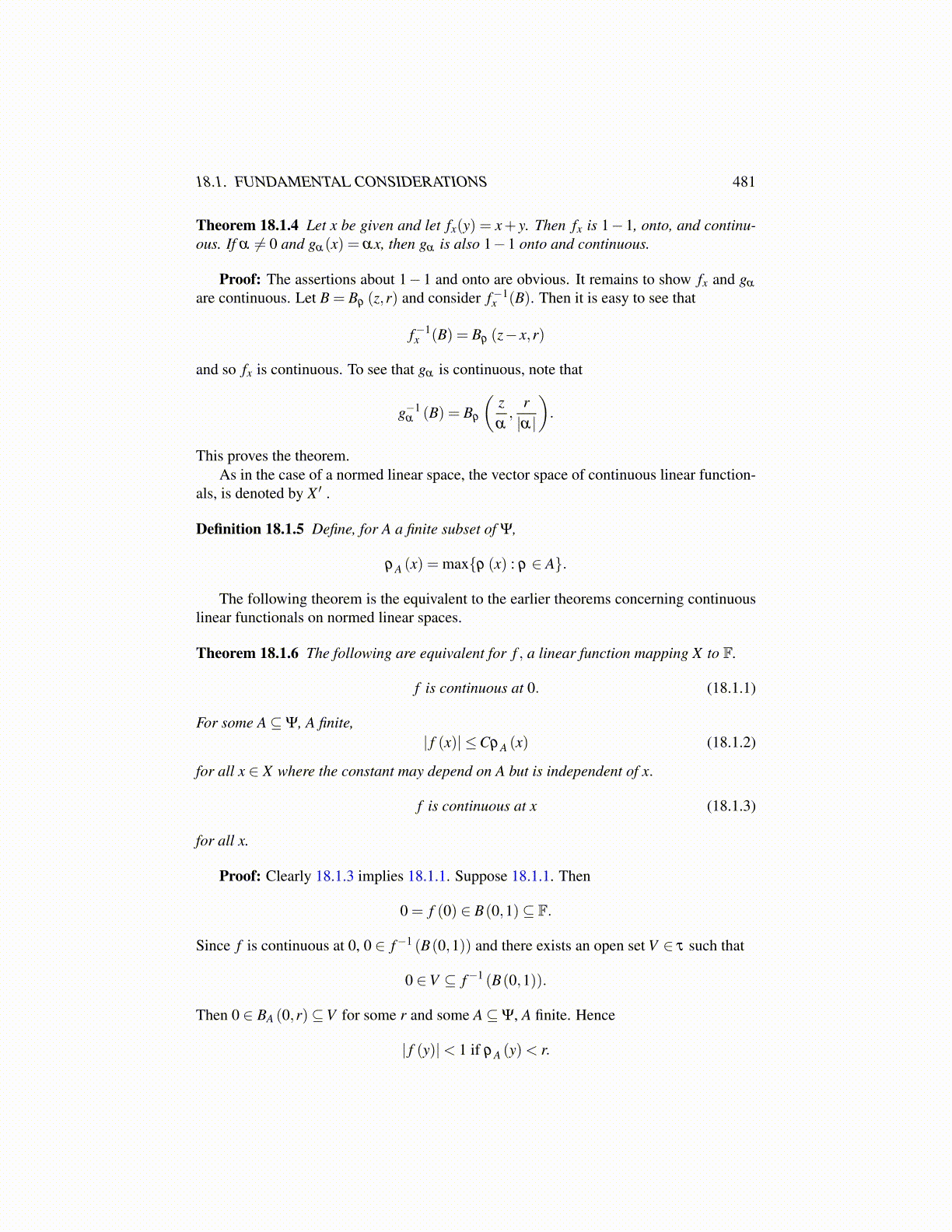
18.1. FUNDAMENTAL CONSIDERATIONS 481
Theorem 18.1.4 Let x be given and let fx(y) = x+ y. Then fx is 1−1, onto, and continu-ous. If α ̸= 0 and gα(x) = αx, then gα is also 1−1 onto and continuous.
Proof: The assertions about 1−1 and onto are obvious. It remains to show fx and gα
are continuous. Let B = Bρ (z,r) and consider f−1x (B). Then it is easy to see that
f−1x (B) = Bρ (z− x,r)
and so fx is continuous. To see that gα is continuous, note that
g−1α (B) = Bρ
(zα,
r|α|
).
This proves the theorem.As in the case of a normed linear space, the vector space of continuous linear function-
als, is denoted by X ′ .
Definition 18.1.5 Define, for A a finite subset of Ψ,
ρA (x) = max{ρ (x) : ρ ∈ A}.
The following theorem is the equivalent to the earlier theorems concerning continuouslinear functionals on normed linear spaces.
Theorem 18.1.6 The following are equivalent for f , a linear function mapping X to F.
f is continuous at 0. (18.1.1)
For some A⊆Ψ, A finite,| f (x)| ≤CρA (x) (18.1.2)
for all x ∈ X where the constant may depend on A but is independent of x.
f is continuous at x (18.1.3)
for all x.
Proof: Clearly 18.1.3 implies 18.1.1. Suppose 18.1.1. Then
0 = f (0) ∈ B(0,1)⊆ F.
Since f is continuous at 0, 0 ∈ f−1 (B(0,1)) and there exists an open set V ∈ τ such that
0 ∈V ⊆ f−1 (B(0,1)).
Then 0 ∈ BA (0,r)⊆V for some r and some A⊆Ψ, A finite. Hence
| f (y)|< 1 if ρA (y)< r.